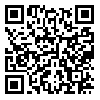Volume 23, Issue 5 (Jul-Aug 2015)
JSSU 2015, 23(5): 420-431 |
Back to browse issues page
Download citation:
BibTeX | RIS | EndNote | Medlars | ProCite | Reference Manager | RefWorks
Send citation to:



BibTeX | RIS | EndNote | Medlars | ProCite | Reference Manager | RefWorks
Send citation to:
Salehy shemiran S, Sadooghi M, Sadraie H, Kaka G. Study of the repair of femoral bone defects using adipose-derived stem cells (ADSCs) on Chitosan - Gelatin membrane in rats (biomechanical and radiological evaluations). JSSU 2015; 23 (5) :420-431
URL: http://jssu.ssu.ac.ir/article-1-2977-en.html
URL: http://jssu.ssu.ac.ir/article-1-2977-en.html
Abstract: (6644 Views)
Background and purpose: Adipose - drived stem cells are multipotent cells that capable to diffrentiate in to osteogenic cells. On the other hand, the scaffold of chitosan and gelatin are biodegradable and compatible used for tissue repair. This study evaluated the repair of femoral bone defect using adipose-derived stem cells on gelatin – chitosan membrane in adult Albino Wistar rats by radiographic and biomechanical tests.
Materials and Methods: In this study, sixty male adult rats were equally divided into six groups. 1)Normal group) that received no treatment and bone intact and is only used to compare the biomechanics, 2(Normal Foramen group) femoral bone were removed from the animal body, and were then created bone defect similar to the experimental groups for biomechanic testing, 3 (control group) received no treatment after bone defect. 4 (sham group) after bone defect, the culture medium was injected at the site of bone defect. 5 (gelatin - chitosan group) that gelatin - chitosan membrane was used in to bone defect. Group 6 that transplanted ADSCs in to bone defect.
Results: Radiograph bone opacity increased in chitosan – gelatin, cell and cell with chitosan - gelatin groups compared to control group but this difference was not significant. Biomechanical results of bone showed mean Fmax was increased in treatment groups compared to control group however the difference was not significant but compared with the normal foramen group significantly increased.
Conclusion: It seems that scaffold of chitosan - gelatin membrane and ADSC cell transplantation appears to be effective in repair of bone defect.
Type of Study: Original article |
Subject:
Biology
Received: 2014/10/27 | Accepted: 2015/04/11 | Published: 2015/08/5
Received: 2014/10/27 | Accepted: 2015/04/11 | Published: 2015/08/5
Send email to the article author
| Rights and permissions | |
 |
This work is licensed under a Creative Commons Attribution-NonCommercial 4.0 International License. |





